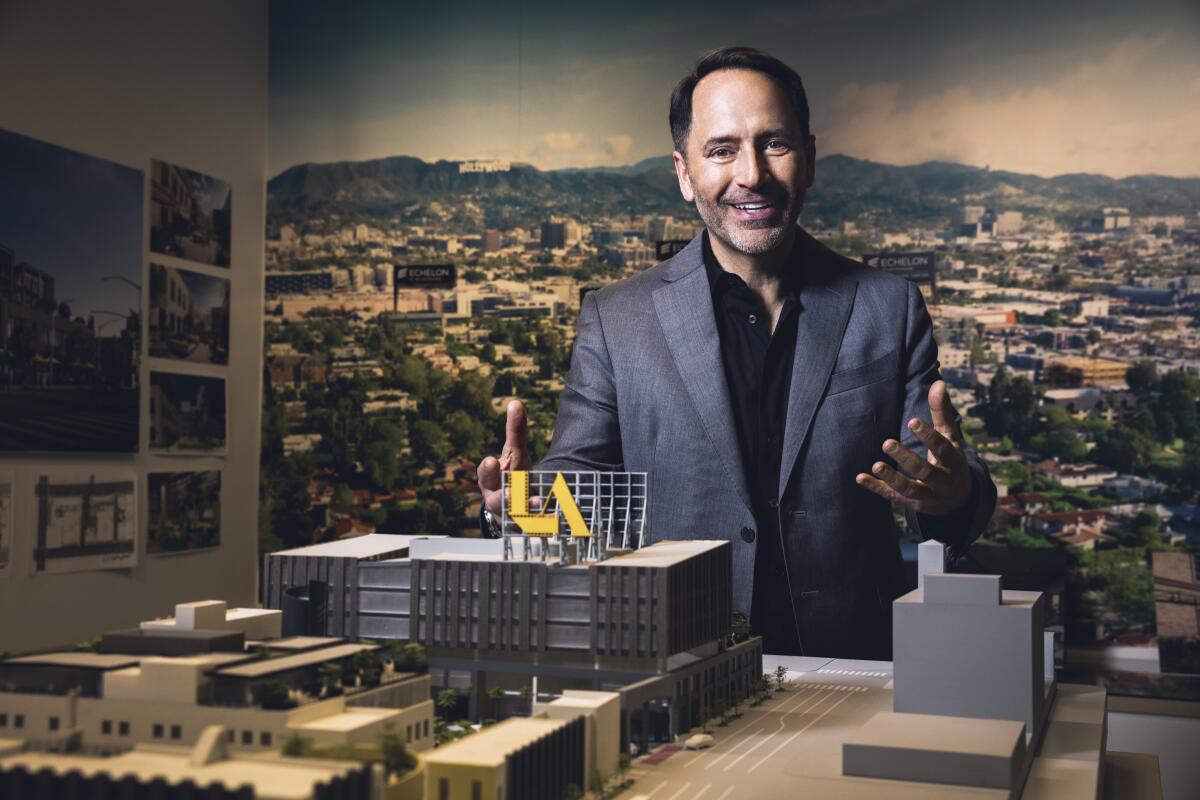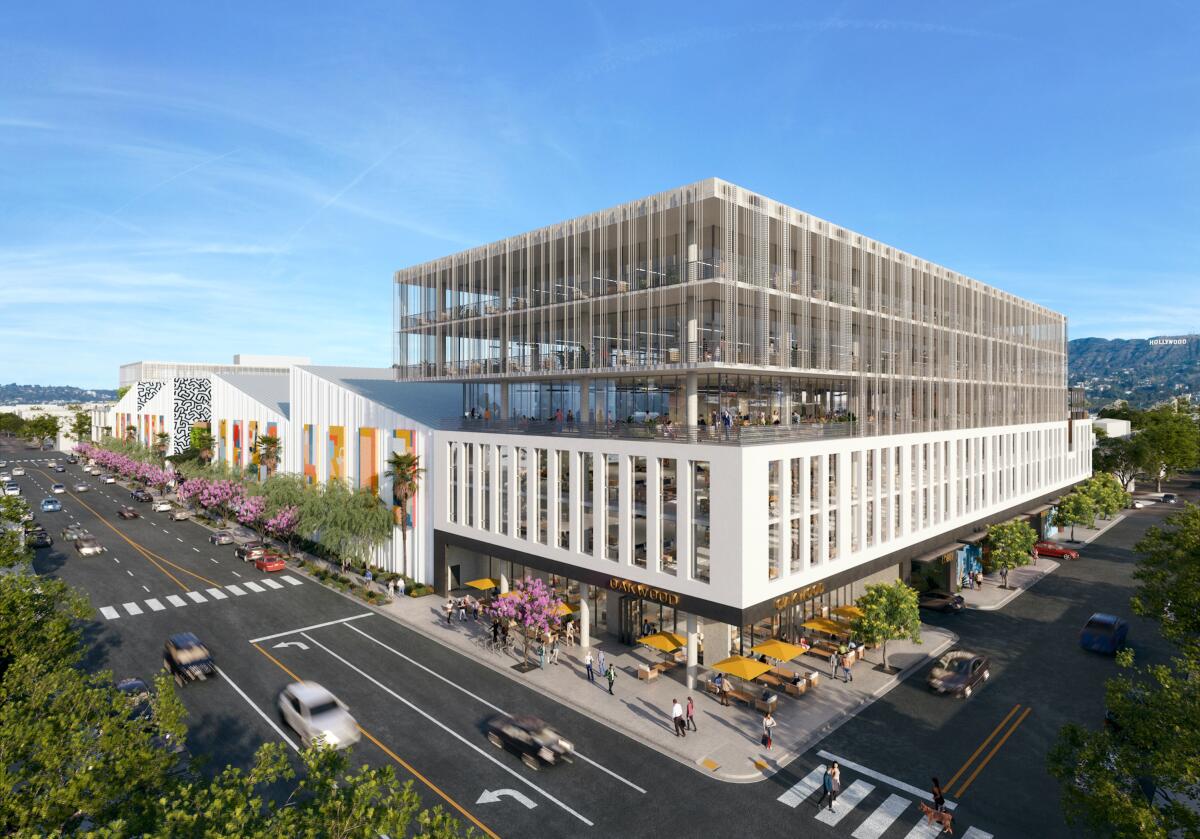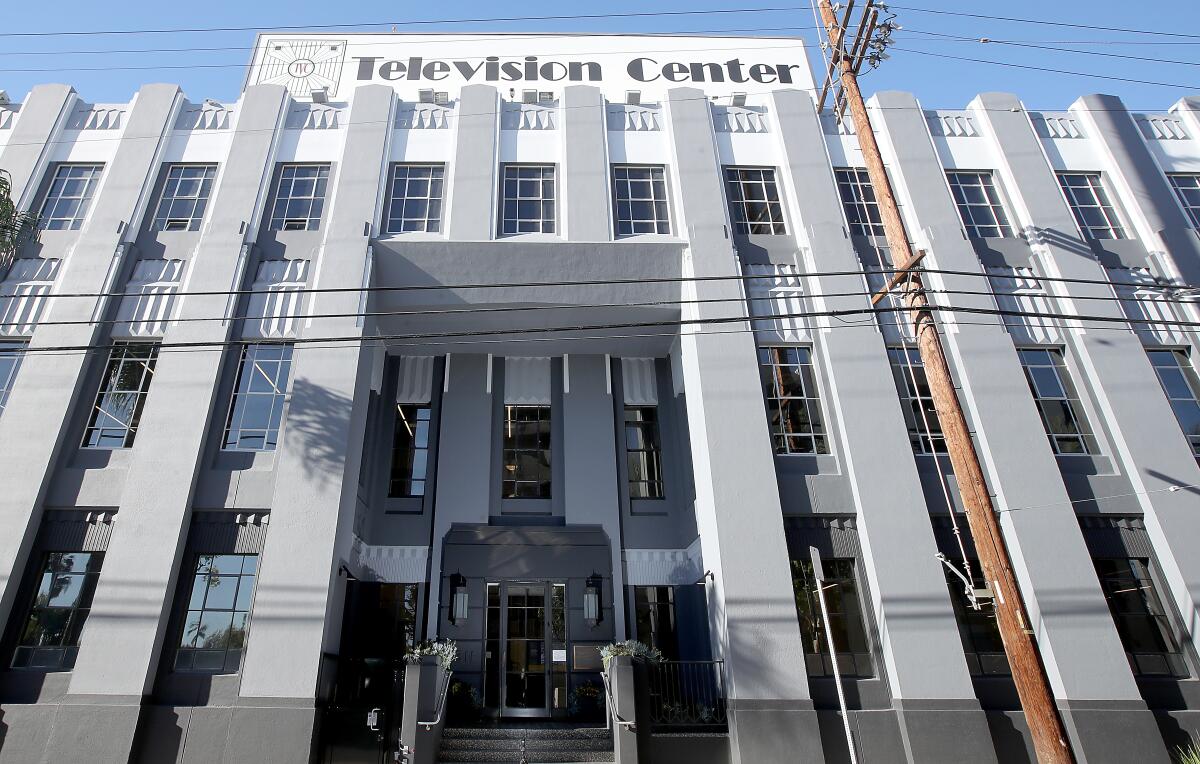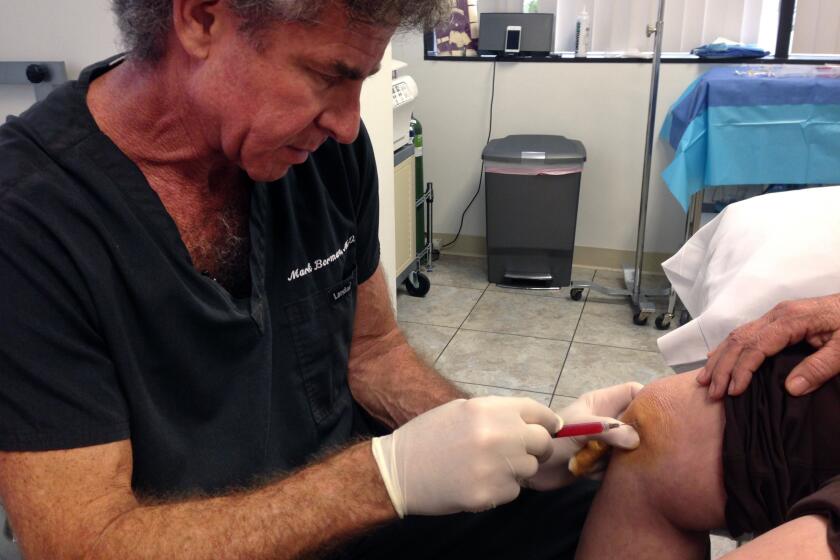Q&A: David Simon isn’t a starry-eyed dreamer, but he’s all in on Hollywood

David Simon is so bullish on Hollywood he’s building a new movie studio there from the ground up and renovating another one that dates to the days of silent films.
They’re the largest of 10 projects the real estate developer has going in Hollywood at a time when many other Los Angeles builders have paused work in the face of high interest rates and construction costs that make it harder to build profitably.
Simon is banking on the lasting stamina of the entertainment industry even as it goes through structural changes in the age of streaming, and the enduring appeal of Hollywood as the place to make movies and television shows.
Through his company BARDAS Investment Group, Simon recently launched construction of Echelon Studios, a $450-million complex on Santa Monica Boulevard west of the 101 Freeway on a site formerly occupied by a Sears store. It will include five soundstages and support facilities, including offices and space to keep trucks, production equipment and actors’ trailers.

Less than a mile away on Romaine Street, Simon is preparing to launch a $600-million renovation and expansion of Echelon at Television Center, which was once home to Technicolor’s film manufacturing laboratory and Metro Pictures Corp., which became part of Metro-Goldwyn-Mayer in the 1920s. Among Metro’s stars were Rudolph Valentino, Lillian Gish, Ramon Novarro and Buster Keaton.
Before he founded his own company in 2018, he oversaw two large-scale Hollywood projects for Kilroy Realty: the $420-million office, residential and retail redevelopment of the former CBS headquarters in Hollywood now known as Columbia Square and the $450-million office and residential redevelopment of the former Academy of Motion Picture Arts and Sciences headquarters site now known as On Vine.
The Times spoke with Simon to discuss his Hollywood projects, as well as his predictions about the future of the neighborhood and the local entertainment industry. The interview has been edited for brevity and clarity.

You chose a long time ago to focus your efforts on Hollywood. What made you think it had a leg up on other real estate markets?
I always knew Hollywood is the biggest brand in the world. Everybody knows what Hollywood is — films, television, celebrity — and that is just a great brand to have while you’re developing. It was surprising that there was not a lot of institutional investment there for many years. What really got me going was the CNN building.
What happened with that building? Larry King used to broadcast his shows there.
We had the opportunity to buy the building in the early 2000s when I was with Broadreach Capital Partners and we didn’t want to lose its high-profile tenant, CNN. They had a deal on the table to move to the Sherman Oaks Galleria.
I remember asking the question, “If we bought the building, would you be interested in staying if we built you a new studio? And the answer was, “Yes,” and we did a 20-year lease with them. That really said to me that there’s a market in Hollywood and there’s really no focus from an institutional landlord mindset, no investment dollars coming in, because there hadn’t been new studios or soundstages built for decades.
You continued to work for other developers until six years ago when you formed your own company. What made you think it was time to take the leap?
We said, “This industry is really growing. There seems to be strong demand for content, streamers are growing and a lot of production is happening.” We thought there was a need to create new and inspiring environments in the entertainment capital of the world for media and content creators.
What’s your company doing now?
We’ve got about 1.6 million square feet in development. All entitlements are in place with the exception of Television Center, which is still going through city approvals. This is all about creating a portfolio of assets that caters to this entertainment user base. Between our two studios we’ll have about 10 soundstages and a nice critical mass.
A lot of other developers are on the sidelines waiting for conditions to improve. Why are you plowing ahead?
My partners at Bain Capital Real Estate and I are not naive to where the world is today, where interest rates are and the cost of debt and construction costs and everything that’s going on in the world. But we’re of the mind that our locations are great. They’re infill locations in the heart of Hollywood.
The demand for media and content is having its ups and downs like any growing industry does. There will be consolidations and things like that, but at the end of the day, that demand is going to continue to be there. And for that demand to be there, quality product, what I call the manufacturing facilities, needs to be put in place and it needs to be state of the art.
Would that slow down the trend of movie and television production leaving L.A. for other cities?
With artificial intelligence, LED screens and other technology [filmmakers] can create scenes inside of a soundstage that feels like you’re in New York or Paris, but you’re really in L.A. The more that content can be created locally, the better for the talent.
More to Read
Inside the business of entertainment
The Wide Shot brings you news, analysis and insights on everything from streaming wars to production — and what it all means for the future.
You may occasionally receive promotional content from the Los Angeles Times.











